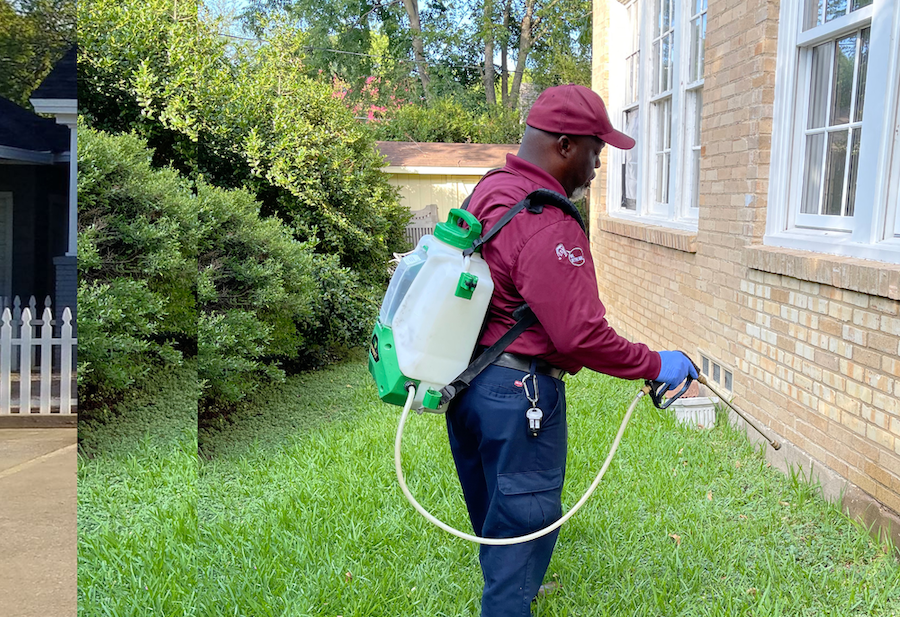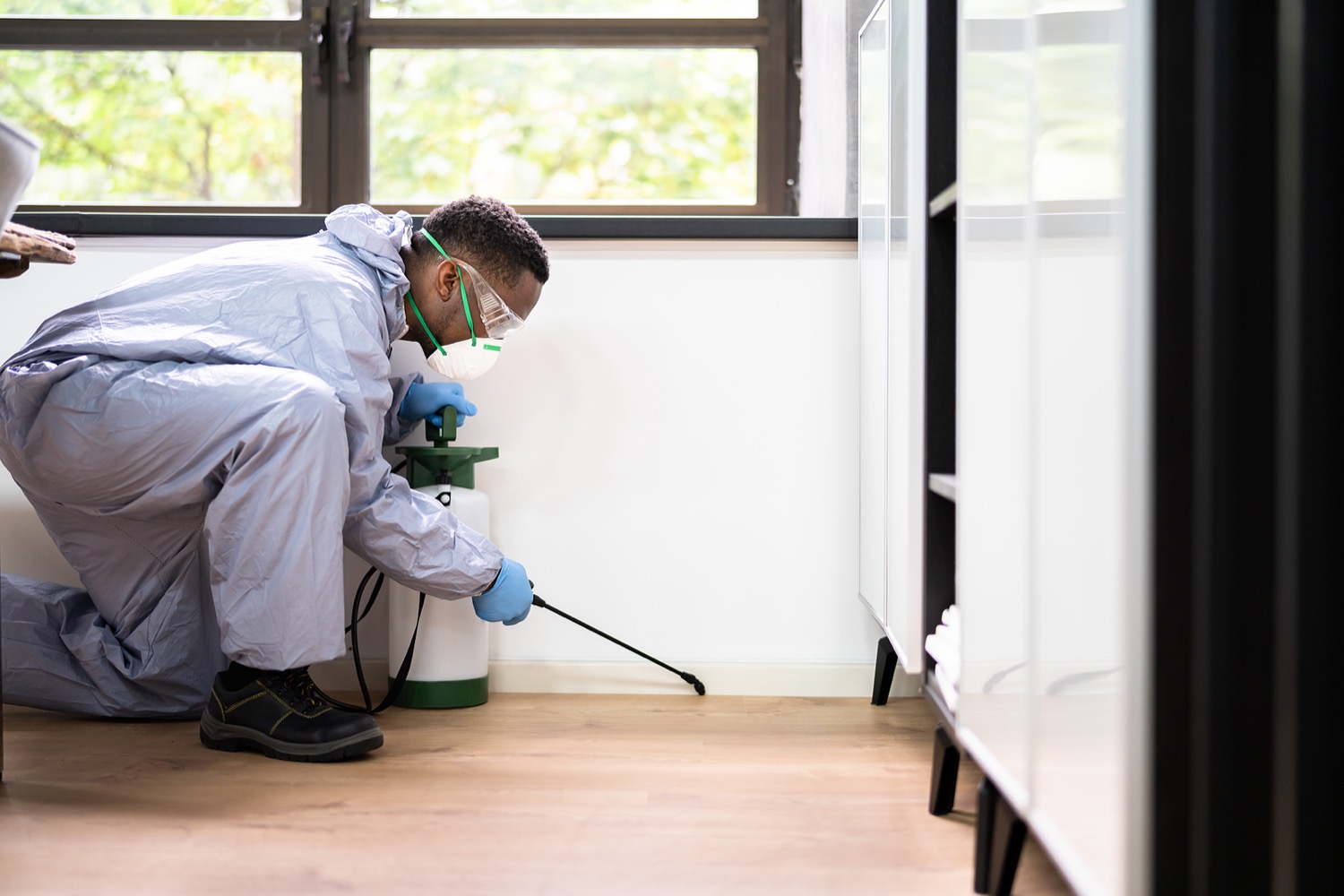A1 Bed Bug Exterminator Charlotte - Reliable and Affordable Services
A1 Bed Bug Exterminator Charlotte - Reliable and Affordable Services
Blog Article
Bed Insect Therapy Failure: Comparing Chemical Vs. Non-Chemical Solutions
In the world of bug control, particularly when managing the persistent problem of bed pests, the option in between chemical and non-chemical therapy services can be a pivotal one. Both techniques supply unique benefits and disadvantages, affecting variables such as performance, safety factors to consider, and general price. By examining the nuanced information of each technique, a clearer understanding of which path to go after in attending to a bed insect problem can be obtained.
Effectiveness of Chemical Therapies
Chemical therapies for bed bug infestations have been widely identified for their powerful and quick effectiveness in eradicating these bugs. When thinking about the performance of chemical treatments, it is critical to recognize that they can provide a quick and detailed remedy to a bed bug issue. Professional pest control men often count on insecticides to target bed insects at various phases of their life process, including eggs, adults, and nymphs. These chemicals typically work by interfering with the bed insects' nerve system, resulting in paralysis and ultimate death.
In addition, chemical treatments have the advantage of providing recurring impacts, suggesting that they can proceed to get rid of bed bugs even after the initial application. This residual action is especially helpful in combating any potential re-infestations. Furthermore, the rapid activity of chemical treatments can bring relief to people dealing with serious bed insect infestations, enabling them to gain back control of their space swiftly.
Safety And Security Worry About Chemical Solutions
One essential facet that calls for mindful consideration when utilizing chemical solutions for bed insect treatment is ensuring the safety of owners and the atmosphere. Exposure to specific chemicals used in bed pest treatments can lead to respiratory system issues, skin inflammation, or various other unfavorable responses, particularly in people with pre-existing conditions or sensitivities.
Moreover, the environmental effect of chemical options is another significant factor to consider. Some pesticides used in bed bug therapies may be dangerous to useful insects, wildlife, and communities if they seep right into the soil or water systems. It is important to make use of chemical treatments sensibly, complying with safety and security standards, and thinking about less poisonous options to mitigate these risks and ensure the effective and risk-free management of bed bug infestations.
Benefits of Non-Chemical Approaches
Taking into consideration the potential safety worries and ecological effect related to chemical solutions for bed insect treatment, discovering non-chemical strategies presents an encouraging option with numerous unique benefits. Non-chemical methods use a safer alternative for houses, especially those with pets, children, or people sensitive to rough chemicals. These methods eliminate the risks of direct exposure to harmful materials, decreasing the capacity for negative health effects. In addition, non-chemical therapies are eco-friendly, as article source they do not add to air or water air pollution, making them a lasting selection for bug control.
Additionally, non-chemical solutions can be efficient in targeting bed insects, consisting of hard-to-reach locations where chemical treatments might not penetrate - A1 charlotte pest control companies. Techniques such as warmth treatment, vacuuming, heavy steam cleaning, and bed mattress encasements provide complete obliteration without the use of harmful chemicals.
Limitations of Non-Chemical Treatments

In addition, insect exterminator company non-chemical therapies usually need several applications to achieve successful eradication. This can be time-consuming and may not always assure full removal of all bed bugs and their eggs, specifically in hidden or hard-to-reach places.
Furthermore, the success of non-chemical therapies heavily counts on correct application and thoroughness, which can be testing for individuals without specialist expertise. Inadequate application of non-chemical methods may result in insufficient eradication, leading to persistent problems and the need for extra therapies.
Therefore, while non-chemical treatments have their advantages, it is necessary to recognize these constraints and consider them when figuring out one of the most efficient method for taking care of bed insect infestations.
Price Contrast: Chemical Vs. Non-Chemical Options
Given the constraints linked with non-chemical treatments, an essential facet to review in the context of bed bug monitoring is the cost contrast in between chemical and non-chemical alternatives. In contrast, non-chemical therapies like heat treatment or heavy steam can be much more expensive, with costs ranging from $1,000 to $6,000 for a whole home. While the first price of chemical treatments might appear reduced, several treatments may be called for to completely eliminate the problem, potentially raising the general expense.
Conclusion

Taking into consideration the potential explanation security issues and environmental influence linked with chemical solutions for bed pest treatment, checking out non-chemical strategies presents an appealing option with numerous distinct benefits.Provided the constraints linked with non-chemical treatments, an essential facet to assess in the context of bed bug administration is the expense contrast in between chemical and non-chemical options. In contrast, non-chemical treatments like heat treatment or vapor can be more pricey, with costs ranging from $1,000 to $6,000 for an entire home. While the preliminary expense of chemical therapies might appear reduced, multiple therapies may be called for to totally eradicate the infestation, potentially increasing the general price.In verdict, when comparing chemical and non-chemical bed bug therapy alternatives, it is necessary to consider efficiency, safety, advantages, constraints, and cost.
Report this page